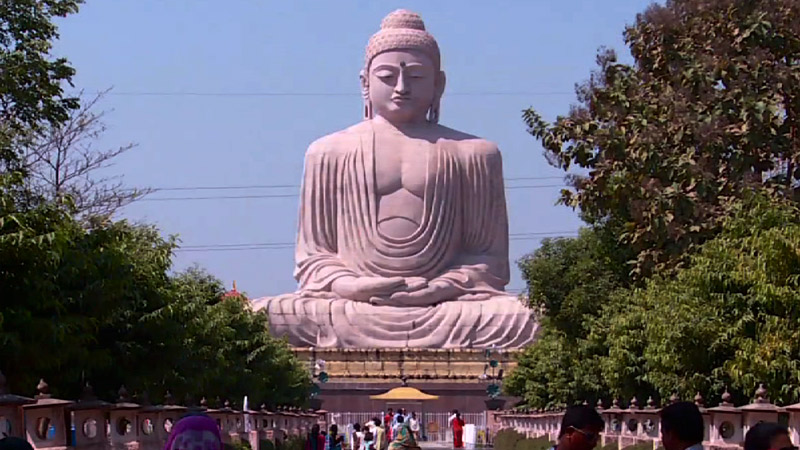By Kastalia Medrano
Archaeologists discovered a box in Jingchuan County, China, which, according to its inscription, contained the cremated remains of the Buddha. More than 260 Buddhist statues were found along with the remains, some more than 6-and-a-half feet tall. One called the Heavenly King was just 13 inches in height. Archaeologists date the statues to the Northern Wei dynasty (386 A.D. to 534 A.D.) and the Song dynasty (960 A.D. to 1279 A.D.), when the county was a major trading hub on the Silk Road. Local villagers discovered the statues and cremated remains in 2012, and details of the excavation were published in a Chinese-language journal in 2016. Two articles describing the find were more recently translated into English and published in the journal Chinese Cultural Relics.
The cremated human remains within the box have not yet been confirmed by archaeologists as belonging to the Buddha, known also as Gautama Buddha or Siddhārtha Gautama. According to Live Science, when translated, the accompanying transcription reads: “The monks Yunjiang and Zhiming of the Lotus School, who belonged to the Mañjuśrī Temple of the Longxing Monastery in Jingzhou Prefecture, gathered more than 2,000 pieces of śarīra [cremated remains of the Buddha], as well as the Buddha’s teeth and bones, and buried them in the Mañjuśrī Hall of this temple.”
The burial was dated June 22, 1013; the Buddha himself is said to have lived from 563 B.C. to 483 B.C. The archaeological team, led by Gansu Provincial Institute of Cultural Relics and Archaeology research fellow Hong Wu, is still determining whether the statues were also buried at that time along with the box. The inscription goes on to describe how the two monks spent decades collecting such remains.
“In order to promote Buddhism, they wanted to collect śarīra [Buddhist relics]. To reach this goal, both of them practiced the instruction of Buddhism during every moment of their lives for more than 20 years,” Live Science reported the inscription as reading. “Sometimes they received the śarīra from others’ donations; sometimes they found them by chance; sometimes they bought them from other places; and sometimes others gave them the śarīra to demonstrate their wholeheartedness.”
Some statues are of the Buddha or his disciples, while others represent deities. Live Science reported that the archaeologists also discovered several steles, or flat stone slabs, displaying carvings on their surface. Most statues had no writing, but one was inscribed with the following:
“[I] realized that I am confused…every day, because of my admiration of the wisdom of the Buddha, [I] contribute my daily expenses as a tribute, to sculpt a statue of Śākyamuni Buddha, praying for greater longevity, and…” The line that followed was not visible.
This isn’t the first time the Buddha’s remains have been reported found. A skull bone purportedly belonging to the Buddha turned up in 2016, inside a stone chest discovered in Nanjing, China.

























